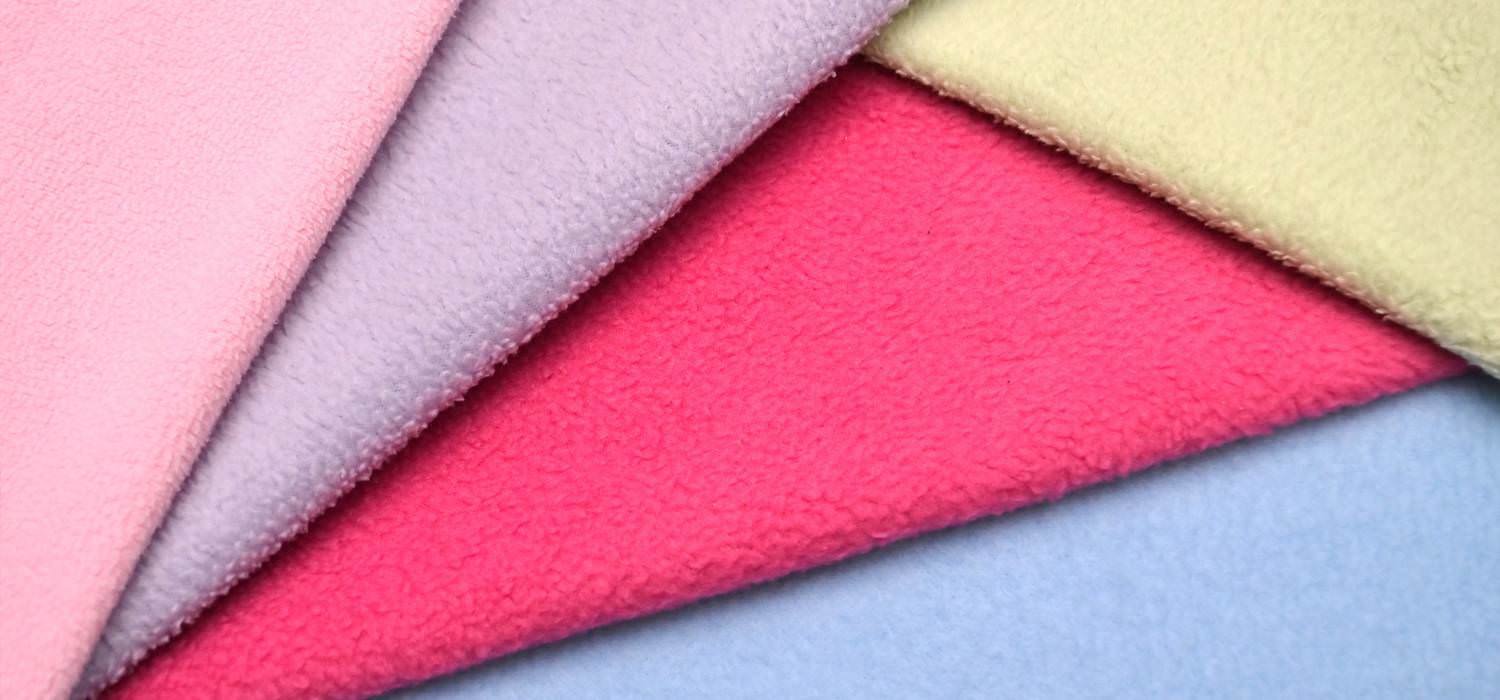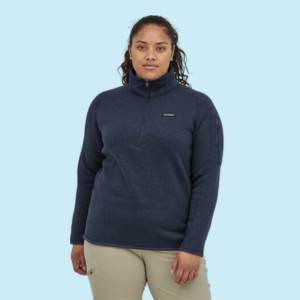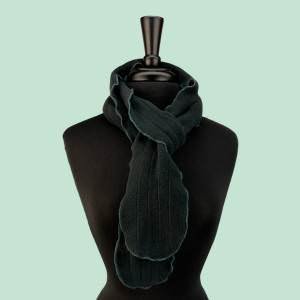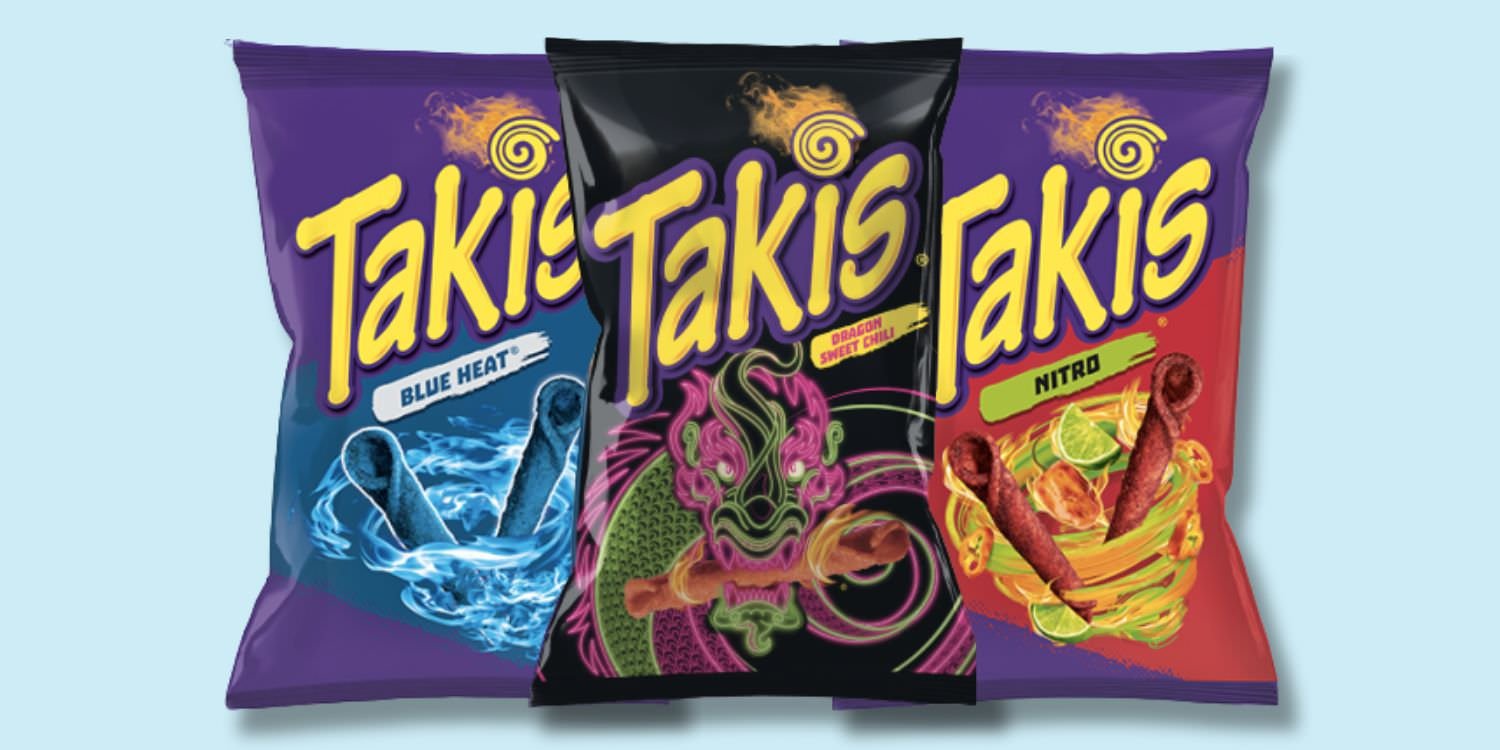Is Fleece Vegan? A Complete Guide to Staying Warm Without Wool
Are you looking for a realistic vegan wool alternative that holds up to the real thing? Here's the issue: we all are! There are unfortunately very few fabrics that can mimic the insulating properties of animal textiles like wool and down. For those planning on going out in extreme freezing temperatures, wool is, at least for now, nearly impossible to replace.
The good news is, most people can simply use fleece, which is almost always vegan-friendly. That's because most inhabited climates are not as cold as those in which wool would be the only suitable option to keep you warm. Polyester fleece does an excellent job at helping you retain your body warmth. So, keep reading to learn everything you need to know about this vegan-friendly textile!
What is Fleece?
Fleece is a soft, warm fabric made of synthetic fibers or natural fibers, that's frequently used in winter clothing to help you retain body heat. It's most commonly made of woven and brushed PET plastic. While fleece is best suited for colder climates, some varieties are temperature-regulating, making these particular options acceptable for certain spring and summer garments as well.
This textile is often used in outdoor clothing and sportswear, but you'll also come across blankets, bed sheets, and even pillowcases made from fleece. It's soft and cozy to the touch, and also breathable while still retaining warmth.
Is Fleece Vegan?
The beauty of fleece is that it's almost always vegan-friendly! Made with PET, cotton, bamboo, or a blend of these materials, you can rest assured that it's animal-free. However, because polyester fleece, the most popular variety, is petroleum based, non-biodegradable, and often treated with harsh chemicals and dyes, it could still indirectly harm animals.
These toxic substances and plastic fibers can loosen over time, eventually separating from the garment and making their way down the drain. They'll often end up contaminating rivers, streams, and eventually, our oceans. Polyester garments broken down into micro-plastics in landfills may also end up in wild animal habitats, polluting their environment and causing all kinds of creatures to ingest harmful tiny plastic particles.
We also can't forget the GHGs emitted during the production of polyester fleece. All in all, polyester fleece is not considered a sustainable choice, and we'd have to say it isn't 100% animal friendly. However, when met with a lack of affordable and accessible vegan alternatives, it can be considered an acceptable option.
Types of Vegan Fleece
There are currently several types of fleece, produced with different materials and for a wide variety of purposes. For instance, some are more breathable, temperature-regulating and suited for all climates. Others are stretchier and more versatile for activewear and fitted pieces. Most importantly, there are certain types of fleece designed to make warm and cozy coats, hats, and other winter garments.
Cotton/Cotton Blended Fleece
Cotton or cotton blended fleece fabrics are made with 35-100% cotton. You can easily check the label for the exact percentage. These types of fleece boast a soft and comfortable feel, and are often used in coats, hats, blankets, jackets, sweats, linings, and hoodies.
Cotton fleece is usually more odor resistant, soft, and lightweight than polyester fleece. However, it's not as good at insulating or moisture wicking, and can actually lower your body temperature when you sweat, by holding on to the moisture and keeping it pressed against your skin.
This type of fleece is better suited for use in spring, summer, or autumn, and for sportswear when it's not too cold. It can also be considered a more eco-friendly choice when made from 100% organic cotton. Keep in mind that standard cotton fleece takes a ton of water for its production, so organic varieties are a much lower-impact choice. However, they may also be pricier, so try simply going for the most eco-friendly varieties for your budget and personal needs.
Bamboo Fleece
Made with a blend of about 70% bamboo and 30% cotton, bamboo fleece is often considered a more eco-friendly option than polyester fleece. This is especially true when it's made with organic bamboo fibers!
Bamboo fleece comes in heavy/medium weights, and stretchy varieties. It's soft, absorbent, durable, naturally antibacterial, and typically used to make cloth diapers, towels, blankets, sheets, and certain garments. Although more sustainable, it's also less affordable than standard polyester fleece.
Eco-Fleece
Eco-fleece is an umbrella term used to describe a variety of fleece fabrics made with recycled polyester, organic plant fibers, or a blend of both. It could also refer to standard polyester fleece blended with organic fibers or recycled PET. Keep this in mind when browsing, as some are more eco-friendly than others. However, they can all be generally considered more sustainable than 100% virgin polyester fleece.
Eco-fleece is sometimes made using recycled plastic bottles, which keeps them out of our landfills and oceans. This is a major plus for the planet. However, as you may have expected, garments made with this type of fabric also come with a higher price tag, and the sustainability difference may not always be enough to merit the price gap. So, when it comes to eco-fleece, be wary of any greenwashing!
Eco-fleece can be woven into a variety of knits and styles, like those listed next.
Microfleece
Typically made of polyester, microfleece is the lightest, thinnest, most flexible form of fleece. It's great for wearing underneath a winter coat and sweaters for extra warmth. When it comes to microfleece, you can expect zero shedding, pilling, or sweat stains. It also dries quite easily when made from polyester fibers.
Coral Fleece
Another microfiber, coral fleece is soft and stretchy. However, is coral fleece vegan? It's made simply with a blend of polyester and spandex fibers, making it totally vegan-friendly. This type of fleece is often used for baby clothing, jackets and blankets.
Lycra-Spandex Fleece
This type of fleece is blended with around 5-10% spandex to produce an extra stretchy, versatile fabric. It's also extra lightweight and breathable, which is why it's often used for women's fitted sportswear or leggings.
French Terry Fleece
One of the best moisture-wicking varieties of fleece, French terry fleece is considered a mid-weight fabric, so it's not as warm as polar/plush fleece. It can keep you cool in warm temperatures, and warm in cool temperatures. However, it's not ideal for extreme cold. You'd likely come across this material when shopping for tracksuits, gym shorts, or jackets.
Slub Fleece
Slub fleece is a textured fleece produced by twisting different sized yarns together. The resulting pattern produces a heather-like effect that is fairly easy to recognize. This textile can be medium or heavy weight, and is often made with a blend of cotton and polyester. It's used for jackets, pullovers, and other light outerwear garments.
Polar Fleece
Polar fleece is also usually made from polyester, but can be made with other materials, or blended with cotton. In that case, it would be called 'cotton polar fleece.' This type of fleece is thicker and warmer than microfleece or French terry fleece. So, it's often used to make jackets and blankets.
Polar fleece is an excellent insulator, but it's still not as effective as wool. It's also more durable than other more lightweight fleece types, and does not pill. You may also be relieved to learn that it's one of the most affordable and accessible types of fleece.
Sherpa Fleece
Designed to mimic sheep wool to near perfection, sherpa fleece is plushy, pilly, and heavyweight. It features a smooth side and a textured wool-like side, and is typically added to winter fashion staples, like coats and boots, as a lining. However, entire garments like jackets and sweatpants can also be made of sherpa fleece.
Is sherpa fleece vegan? As it's almost always made of synthetic fibers, we can consider it a vegan-friendly option.
Plush Fleece
Plush fleece is even thicker and warmer than polar fleece, at about 3 mm on both sides. It's often made of a cotton/polyester blend, and boasts a luxurious furry texture. Consequently, this type of fleece is ideal for bedding, sweatpants, and sweatshirts.
Is Fleece Eco-Friendly?
Fleece is usually made of non-renewable synthetic fibers like polyester, which is petroleum based. Synthetic fabrics like polyester and other PET fibers are not biodegradable and are often processed with harsh chemicals to give them their soft texture.
These plastics and toxins then go on to contaminate marine and land habitats. In fact, PET fabrics are usually not very long-lasting or high-quality, especially when compared with wool. So, its end-of-life stage is particularly important to consider. Due to its unique weave pattern, fleece is more durable than standard polyester fabrics, however it's still not as long-lasting as natural fibers, like wool.
Luckily, eco-fleece, made of organic plant fibers or recycled synthetic fibers, is better for the planet. In fact, it saves energy, often while removing plastic bottles from oceans and landfills. These vegan fabrics are a more sustainable choice. Therefore, eco-fleece can sometimes be considered an environmentally-friendly alternative to wool.
Factors to Consider when Buying Vegan Fleece
When shopping for garments made of vegan fleece, or any sustainable fabrics for that matter, there are a couple factors to consider.
Natural Fibers
Firstly, is it synthetic or made from natural fibers? Common synthetic fibers include nylon, polyester, acrylic, and rayon. All of these materials can, and are, used to make fleece. Meanwhile, some natural fibers used to make fleece are cotton, bamboo, hemp, and kapok.
If you've come across synthetic fleece, your most eco-friendly options would be recycled/recyclable varieties. Meanwhile, the most sustainable natural fibers would be organic and/or fair trade.
Another factor that determines the sustainability of your garments is how useful they actually are to you, and how durable. Purchasing an eco-friendly item you don't need or will never use is far more wasteful than buying a virgin, non-organic item you do need and will put to good use for years. So, you'll also want to determine whether it's light, mid, or heavyweight, and consider any other necessary properties, depending on what you'll be using it for.
If you're going for a piece that will keep you warm and last you many years, heavyweight is the way to go. Meanwhile, if you're going for fleece garments you can wear during warmer seasons, they'll need to be mid or lightweight. However, this may also mean they're a bit less durable than heavyweight fleece, and require extra care if you want them to last as long as your warmer fabrics.
Finally, if you'll be doing a lot of physical activity while wearing your fleece clothing, you'll want to go with a moisture wicking and odor resistant fabric. Polyester is typically best at keeping moisture off of your skin, however bad odors may easily cling to it. Meanwhile, cotton is breathable and keeps away bad odors, but it holds on to moisture, meaning cotton fleece isn't as ideal for colder weather. More on this below!
The Need for Eco-Friendly Vegan Wool Alternatives
So far, there aren't many vegan textile options that are totally suitable for colder weather. Furthermore, affordable and accessible options can be difficult to come across. Wool is currently the most effective insulator for garments, and is nearly irreplaceable in the coldest of climates.
Cold Weather Can Be Deadly
We all know that insufficient protection in freezing cold weather can lead to hypothermia and in extreme cases, even death. If those who practice outdoor sports in extremely cold temperatures were to protect themselves solely with a fabric like cotton fleece, they would be at high risk.
Cotton traps moisture from your sweat, keeping this cold liquid pressed against your skin, and drastically lowering your body temperature in below freezing temperatures. It's also quite breathable, which is excellent during the summer and spring, but not at all safe for windy, freezing weather.
Secondhand Wool?
Many vegans are against shopping for secondhand wool garments. However, this could be considered an acceptable option when no other options are available. After all, it's about doing what you can to avoid harming animals, not about making unreasonable sacrifices that could lead to bodily harm.
If you're truly adamant about sticking to the "rules" of veganism, keep in mind that the original definition of veganism is much more flexible than many tend to think. In fact, it states that veganism is "a way of living that seeks to exclude -- as far as is possible and practicable -- all forms of [animal] exploitation [...]".
So, if you must use secondhand wool, which does not directly impact animals or immediately raise the demand for this material, so you can have a better chance at surviving freezing weather, this absolutely does NOT oppose the principles of veganism.
Main Takeaways: Concerning Issues With Fleece
Although fleece doesn't provide as much warmth as wool, it can be suitable for most inhabited cold climates. The main problem is, extremely cold habitats may call for a warmer material.
In addition, the warmest fleece options (those made of polyester) are not so eco-friendly, and could harm animals indirectly by contaminating their habitats. On top of that, eco-fleece made of recycled polyester is much less affordable and accessible than its 100% virgin polyester counterpart. So, it's not a feasible option for all vegans. However, if you do have access to garments made with rPET eco-fleece, it will likely be the most well-rounded pick for you, the animals, and our planet.
Other Effective and Eco-Friendly Vegan Insulating Materials for Winter
When it comes to staying warm in below freezing temperatures, proper layering is key. You want to go for thin, soft, and warm interior layers with insulating properties. Heavier sweaters, pullovers, hoodies, or other warm and thick garments are necessary for the middle layers, and you need especially heavy-duty, water-repellent, and windproof materials for the outer layers.
Interior Layers
Recycled Polyester Fleece
The most well-rounded interior options for vegans are those made of recycled polyester fleece. This material is the most insulating vegan-friendly textile that is also thin and lightweight enough to function as a fitted inner layer.
Middle Layers
Hemp Fur
Warm and lightweight, hemp fur is a decent insulator. It can be used as the main material for coats, or as a lining. It's also sometimes used to make warm sweaters, jackets, and plaids.
Banana Fiber or Musa Fiber
Used to make soft scarves, hats, and shawls, banana fiber is biodegradable but also incredibly durable. It's also non-toxic, sustainable, and odor-free. This type of fabric is made using the stalk of banana plants, and results in a warm, cozy textile that actually becomes softer over time!
Outer Layers
When purchasing outerwear garments designed for extremely cold temperatures, you'll want to keep an eye out for puffy, insulated coats that are lined with a furry/wooly textile and coated in a windproof, water-resistant substance.
ThermoBall Eco Insulation
This insulation fiber developed by The North Face is perfect for vegan winter coats, and is made with totally recycled materials. It's lightweight, non-bulky, and extremely durable!
Milkweed Fiber
A plant-based batting that is six times warmer than wool, milkweed fiber floss is likely the best and most sustainable insulation for garments you'll come across. In fact, in addition to its use in jackets and coats, it's also commonly used to fill thick, warm comforters!
PFC-Free Coating
Your coats will normally be covered in a shell that's coated with a water-resistant, windproof substance. While this is absolutely necessary to fight the windy cold weather, this substance is also typically quite damaging to the environment, made from toxic PFCs that accumulate in the body and in natural habitats.
That's why many coat manufacturers are now switching to PFC-free impregnation. However, their performance hasn't been quite as reliable as that of PFCs. Still, some have launched very promising vegan and PFC-free coats that seem to hold up to extremely cold weather. You can always be sure to keep an eye out for these products and their development!
Vegan Products Made With Eco-Fleece
Now that you have the info you need to find the right vegan fleece garments for you, check out some of the best eco-fleece products available to keep you warm all year long!


















